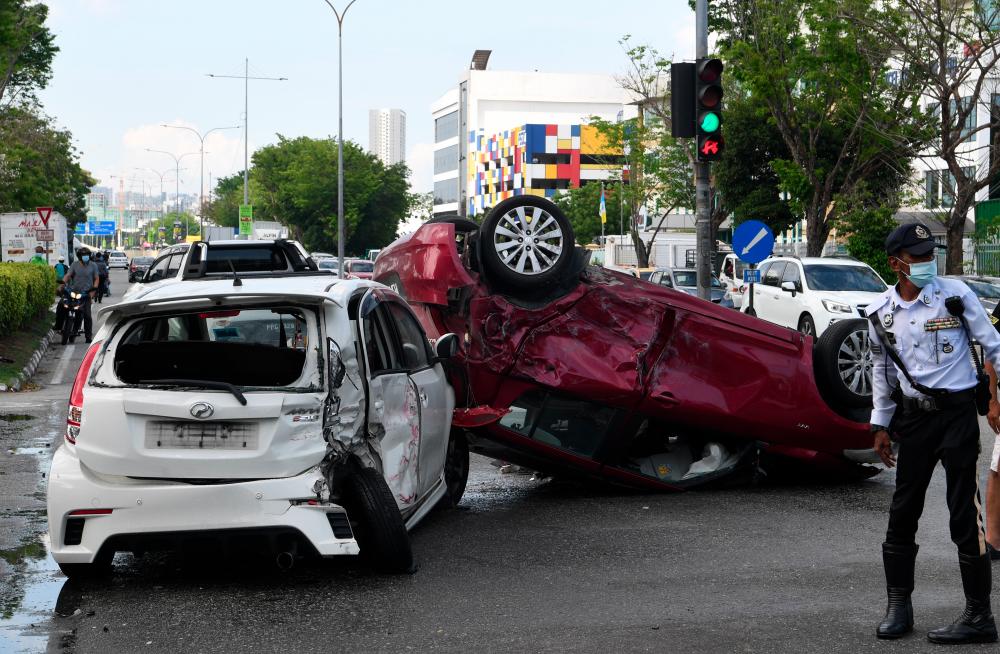WITH the school holidays just around the corner, many families will hit the road for long-awaited trips and quality time together.
As road volumes rise, so does the potential for traumatic brain injuries (TBI), a serious yet often overlooked consequence of road accidents. TBI is a major cause of mortality and disability worldwide, affecting over 69 million people worldwide each year.
In Malaysia, the prevalence is also alarmingly high. According to the National Trauma Database Malaysia, nearly 80% of trauma cases stem from road traffic accidents, with 64% involving TBI.
This concern has grown as road accidents surged from around 370,000 in 2021 to 545,585 in 2022 and to 598,635 in 2023, surpassing pre-pandemic levels.
Understanding the two types of TBI
Traumatic brain injuries (TBI) are classified into two types:
- Penetrating (open) TBI, where objects like bullets or shrapnel pierce the skull; and
- Non-penetrating (closed) TBI, caused by external forces like falls or crashes that move the brain within the skull.
Studies show head injuries caused by road traffic accidents are the major risk factor for TBI, particularly in Southeast Asia, accounting for 56% of global cases compared to only 25% in North America.
According to the Malaysian Registry of Intensive Care Report in 2017, head injuries are among the top ICU admissions, amounting to 7.1%.
“TBI can affect anyone, regardless of age. Falls, motor vehicle accidents, sports injuries, and impacts from objects are common causes.
“Data shows TBI is most prevalent among young motorcycle riders and children, who are particularly at risk,” said Sunway Medical Centre consultant neurosurgeon Dr Johan Quah Boon Leong.
According to the National Trauma Database Malaysia, road traffic accidents mainly affected 87% of males with 34% of them were younger, aged 15- 34, reflecting Dr Quah’s sentiments.
Impact and treatment options

Beyond the immediate physical trauma, TBI has extensive long-term consequences. Individuals may experience memory loss, concentration difficulties, personality changes, depression, anxiety, mood swings, chronic headaches, and dizziness.
Severe TBI can lead to chronic traumatic encephalopathy (CTE) and post-traumatic dementia (PTD), further impairing cognitive and motor functions. These slowly damage parts of the brain and may impact one’s memory, other thinking skills, behaviour, personality, speech or balance.
TBI ranges from mild to severe, classified by the Glasgow Coma Scale, which assesses brain injury severity based on a person’s ability to follow directions, eye movement, and speech coherence.
Mild TBI, such as concussion, is treated with symptom monitoring, rest, and pain or anti-nausea medications.
Moderate to severe TBI may require immediate surgery, intensive care, and medications to reduce fluid buildup, prevent seizures, and support healing.
“With TBI, outcomes can vary, with some mild injuries leading to worse results than moderate ones due to individual factors,” explained Dr Quah.
“Severe TBIs can cause widespread impairments in movement, vision, coordination, memory, and mood. Immediate medical attention is crucial for accurate diagnosis and management, as even mild or repeated injuries can have long-term effects like early-onset dementia.”
The recovery time for TBI varies widely. Mild TBIs, like concussions, may heal within weeks, while moderate to severe TBIs can take months or years.
Notably, 75% of moderate to severe TBI patients achieve favourable functional outcomes after 12 months of diligent neurological rehabilitation. However, some individuals may face long-term or permanent effects.
Preventing TBI with simple precautions
According to Dr Quah, not wearing a seatbelt and riding a motorcycle without a helmet is the number one cause of TBI.
“Even a 20km/h accident on a motorcycle or a car without a seatbelt can result in a severe traumatic head injury. It’s not just about the speed; it’s about the lack of protection,” he added.
“While road accidents cannot be avoided, precautions like wearing helmets and protective gear, using seatbelts, avoiding risky behaviours such as reckless driving, beating the traffic lights, and ensuring safe environments can reduce the risk of head injuries and make a significant difference.
“Also, seek immediate help if one suspects experiencing a head injury. The more we delay addressing these issues, the greater the loss to our society.” – Jan 14, 2025
Main image: Bernama









